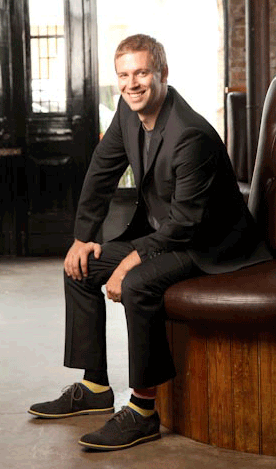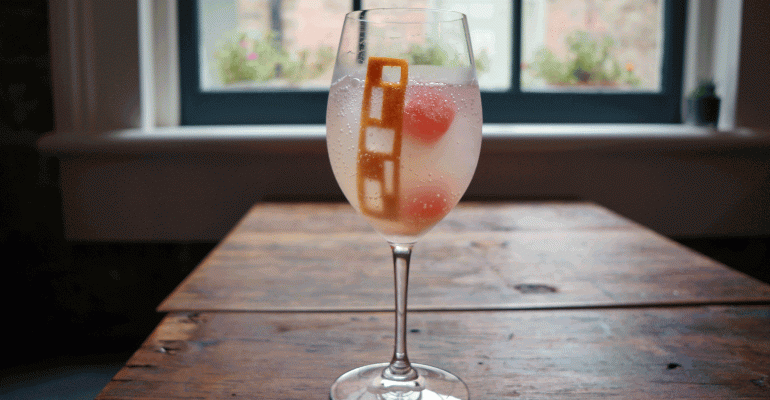Nathan Dalton, food and beverage manager at the Catahoula, a 35-room boutique hotel in New Orleans, is betting big on Peruvian pisco.
The entire cocktail program at the hotel’s downstairs bar is based around the unaged grape brandy. The spirit is produced in both Peru and Chile, but Dalton uses only Peruvian varieties to match the Peruvian food served at the hotel’s restaurant.

Pisco is essentially a distillate of grapes.
Right, but when you’re talking about Peruvian pisco, there’s nothing else that’s allowed to be added — you can’t age in wood or dilute down with water. So it’s like a complete, pure expression of the grape that you’re using, so the grape really matters a lot. You can use any of eight different grapes — four are considered aromatic and four are considered non-aromatic — and they all have their own unique characteristics.
When we first opened the bar we bought up the entire supply of pisco in the whole state. We were having to run around to different liquor stores and try to use those. And so the drinks that we created, we had to use different kinds of piscos [than we intended] for those drinks, and some of them just flat-out didn’t work. It was a great learning experience seeing how different piscos are [from each other] and how much it matters which one we use in which drink.
Tell me about some of your cocktails.
We run the gamut from simple and straightforward to really outside the box. Other than the typical Peruvian cocktails like the Chilcano [pisco, lime juice and ginger beer] and the Pisco Sour [pisco, citrus, simple syrup and egg white], one of our biggest sellers is the D’Artagnan, which is an original. It’s basically like a pisco martini, but very heavy on the vermouth, and we use a blanc vermouth. It’s just like a martini, but way more drinkable. It tastes like you’re drinking pisco, but it goes down like water because of the vermouth and dilution [from stirring]. So it’s a great introduction to pisco. We go from that one to one of our crazier drinks, something called the Huevo. The base of the drink is something called leche de monja, “nun’s milk.”

It’s something they make in the Peruvian mountains for fertility reasons. You take eggs that are uncracked and uncooked — just right out of the chicken — and submerge them in lime juice for two weeks. The acidity eats the shell but it doesn’t penetrate the membrane beneath the shell, so what you end up with is a layer of calcium sediment at the bottom, and then what looks like eggs, and in fact you still have the raw egg inside of the membrane, and you can take them out and bounce them on the bar. They’re very rubbery.
We did a science experiment like that in elementary school, soaking eggs in vinegar.
Exactly. It’s similar to that. So you take all that. It’s really gross looking, and put it all in a blender and mix it with pisco and sugar, and that’s a leche de monja. Then we add some Falernum and passion-fruit juice and ginger beer, all homemade, so it’s kind of tiki’ed up. And we serve it in a tiki mug and garnish it with a flower called jambu, also known as buzz buttons, which comes from the Amazon jungle. They use that for toothaches. It makes your mouth go numb, and then you feel tingly like there are a million Pop Rocks inside your skin. And it changes the way you perceive the drink. It makes it colder, brings out the passion fruit and is just a wild five-minute ride.
Do you chew on the flower?
Yeah, you chew on it and swallow it. You have to explain the whole ordeal every time, and then watch [the customer's] face as they discover what they’ve got themselves into.
Do you use many different types of pisco?
As many as we can get our hands on, which is probably around 15 in Louisiana.

Not really, which was great because I’d tried this somewhat before the last place I worked, which was a Mexican taqueria. All the drinks on the menu were pisco-based, but all the customers wanted margaritas because it was a taqueria. But here, people didn’t have any preconceived notions about what they should order.
And you’ve already filtered the crowd because customers going out for Peruvian food are probably going to be interested in trying something new.
Exactly. Everybody that’s heard of us knows that we’re doing something different, so they’re into it. People ask what is pisco probably 100 times a day, to the point where I got a tattoo on my arm that says how to pronounce it and that it’s unaged Peruvian brandy.
You have a permanent pisco tattoo on your arm?
Yeah.
So you’re into it.
I’m into it big time.
Contact Bret Thorn at [email protected]
Follow him on Twitter: @foodwriterdiary

